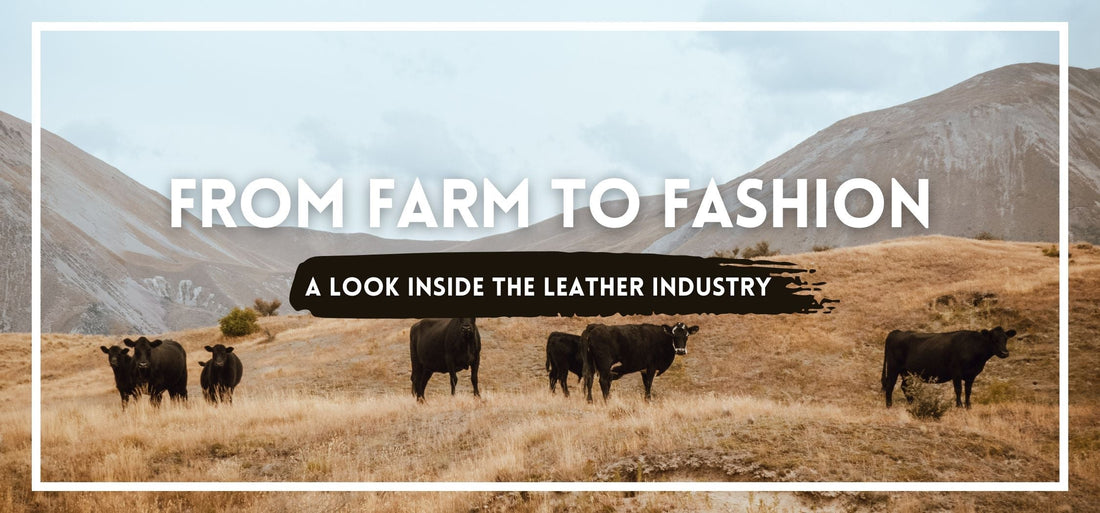
From Farm To Fashion
The leather industry is a fascinating economic powerhouse that stretches from rural cattle ranches to New York Fashion Week, and everywhere in between. With over 50 billion in yearly sales within the USA, this industry is a crucial part of the US market & is responsible for managing the byproducts of the food industry. Bridging the gap between agricultural practices and sustainable fashion.
The Journey Begins.
Cattle farming is a foundational element in the leather manufacturing process, influencing both the quality of the leather and the sustainability of the industry. The journey begins within the heartland of America, on ranches dotted across the country.
The ranch lifestyle embodies a unique blend of tradition & hard work. It's more than just a profession; it’s a way of life that emphasizes sustainability, community, and a profound respect for the land and animals.

A Liability Or A Valuable Resource?
In a country where meat consumption is among the highest globally, a significant amount of byproducts are generated. That's where the leather industry steps in, instead of letting these hides go to waste, tanneries & leather craftsmen take what would otherwise end up in a landfill and turn it into practical, long-lasting products.
Did you know that modern leather manufacturers recycle over 270 million cow hides each year? Without the leather industry transforming these into usable products, over 7 million tons would be wasted and sent to a landfill. Creating a huge environmental & biological impact!
*Learn about one of the tanneries we purchase our leather from
Transforming Raw Hides Into Leather.
Once the cow hides are collected, they are sent to tanneries across the country to be transformed into leather. Tanning is a crucial step that transforms raw hides into durable leather, that will be used in a variety of products. Modern-day tanneries have made significant strides in adopting eco-friendly practices.
Innovations such as chrome-free tanning, vegetable tanning, and efficient waste management systems have drastically reduced the environmental footprint of this process. In addition, tanneries often recycle the water used in their processes, contributing to water conservation efforts.

The Art Of Leather Crafting.
After the tanning process is complete, these newly finished leather hides are shipped out to manufacturing workshops & factories across the country, workshops like ours. Where artisans transform them into unique products, ranging from shoes and bags to furniture and car interiors.
Unfortunately, in today's day, mass production & factories dominate the leather manufacturing market. But, scattered throughout the country there are rare gems-leather workshops where artisans meticulously craft each product by hand. These unique establishments stand in stark contrast to the norm, as most leather goods manufacturing often involves automated processes. Here, skilled craftsmen and women take pride in preserving the art of traditional leatherworking, employing techniques that have been passed down through generations. Every stitch, cut, and detail is a testament to their dedication and expertise.
(Learn more about our leather crafting process here)

From Hide To Home.
Once a leather creation is complete, it makes its final journey to its new home. The end result of this leather crafting process is not just a handbag, but a piece of craftsmanship that finds its place on the arms of fashion enthusiasts worldwide.
For leather artisans like us, witnessing our creations being used and loved by others is such a joy. It is a testament to dedication and skill, knowing each stitch and detail has brought happiness and functionality into someone's life.


1 comment
I love my bags and get so many compliments! I have bought some for gifts. I use the totes when I travel.wonderful bags